Cross-Border Sewage Contaminated Flows: Monitoring the Tijuana River
The Tijuana River runs across the US-Mexico boundary, flowing into and throughout southern California, carrying with it nutrients and contaminants throughout the estuary. In recent decades, the flows have been heavily polluted with untreated sewage from the City of Tijuana.
The wastewater enters the greater Tijuana River estuary, impacting coastal communities and disrupting the natural environment. In order to better understand these cross-border flows, researchers out of San Diego University sought to monitor the waterway test the capabilities of in-situ sensors to measure the contaminated water.
Natalie Mladenov and Trent Biggs were two of the researchers involved in the project, deploying a real-time monitoring system in May of 2021. The research concluded in 2023 and was published in the Science of the Total Environment Journal—however, Mladenov and Biggs have continued to monitor the river due to recent developments in the estuary.
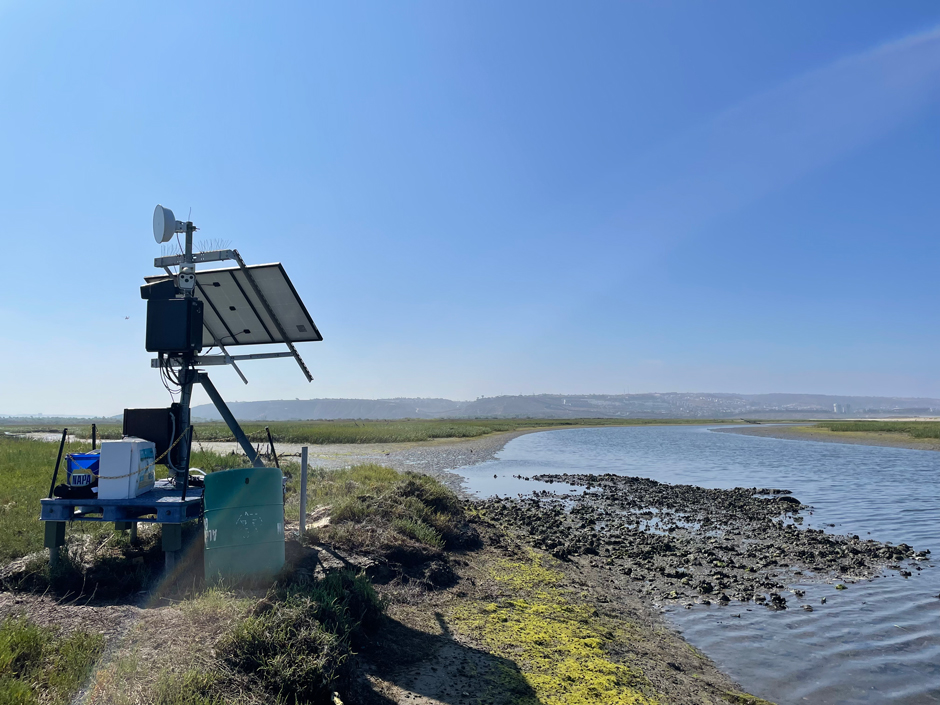
The Tijuana Estuary monitoring station, including solar panel, logger and telemetry. (Credit: Sean Quezada / San Diego State University)
Field Sensors and Lab Analysis of Contaminants in the Tijuana River
While contaminants have been flowing through the river for decades, the recent growth of the City of Tijuana, along with a lack of maintenance and upgrades to wastewater collection and treatment, have led to more consistent and severely polluted cross-border flows.
According to Mladenov, prior to 2022, the flow of millions of gallons per day of water containing sewage, trash, and sediment was infrequent but still a major concern to coastal communities. As a result, the team originally sought to develop a real-time monitoring platform that could record water quality remotely.
A telemetry system could provide an early warning for communities along the river to account for and respond to high contaminants by closing beaches or adjusting water treatment strategies. However, in 2022, due to the polluted flow becoming constant, the research became more focused on testing the limitations of the real-time system in highly polluted settings, as contamination was known to be occurring continuously.
The system monitors throughout the water column with a Manta multi-parameter sonde deployed from a buoy and stationed just below the surface of the water and a deeper YSI EXO2 sonde fixed 0.5 meters off the estuary bottom.
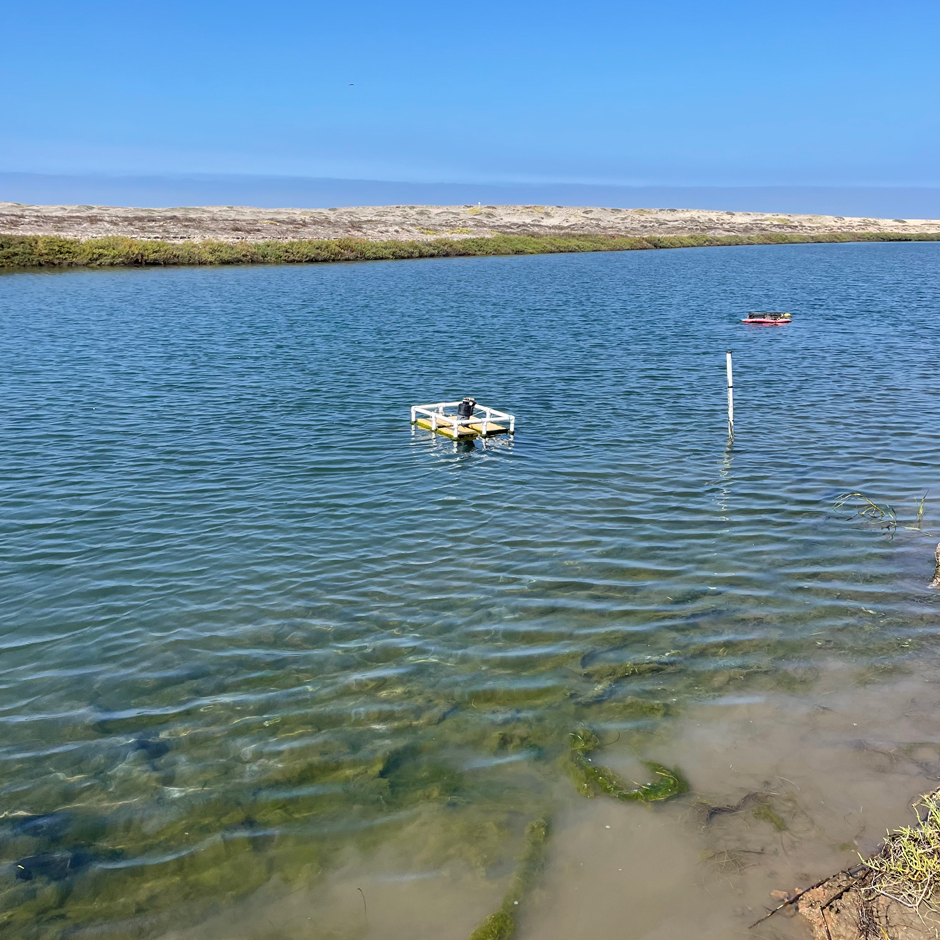
A small buoy holding the Manta3 sonde in the Tijuana Estuary. (Credit: Sean Quezada / San Diego State University)
The Manta platform is equipped with fluorescence sensors for tryptophan, CDOM, pH, specific conductance, temperature, dissolved oxygen (DO), and oxygen redox potential (ORP). The EXO2 measures specific conductance and dissolved oxygen.
Due to the high turbidity, a wiper was installed on the Manta sonde in order to prevent the build-up of biofouling. In addition to the wipers keeping the sensors clean, field hydrologists like Biggs help maintain the system regularly and ensure that sensors are clean, calibrated, and connected to the data logger and power supply—all of which are essential to accessing real-time information.
Mladenov provides a baseline of data to compare the sensor to—collecting samples from the river and using a benchtop meter to analyze water quality. The real-time and laboratory data sets can be compared side-by-side to show the limitations of the sensor platform.
“The benchtop fluorometer scans the fluorescence wavelengths in three dimensions—excitation and emission wavelengths—and then provides an intensity of the fluorescence in the third dimension. So, we’re able to evaluate how well the field sensors perform and what their limitations are,” states Mladenov.
While the benchtop fluorometer provides a more detailed and precise view of the sewage contaminants, the sensor’s real-time alerts are effective at detecting the presence of sewage in the river. These alerts can serve as an early warning to coastal areas and prevent human exposure to harmful coliforms.
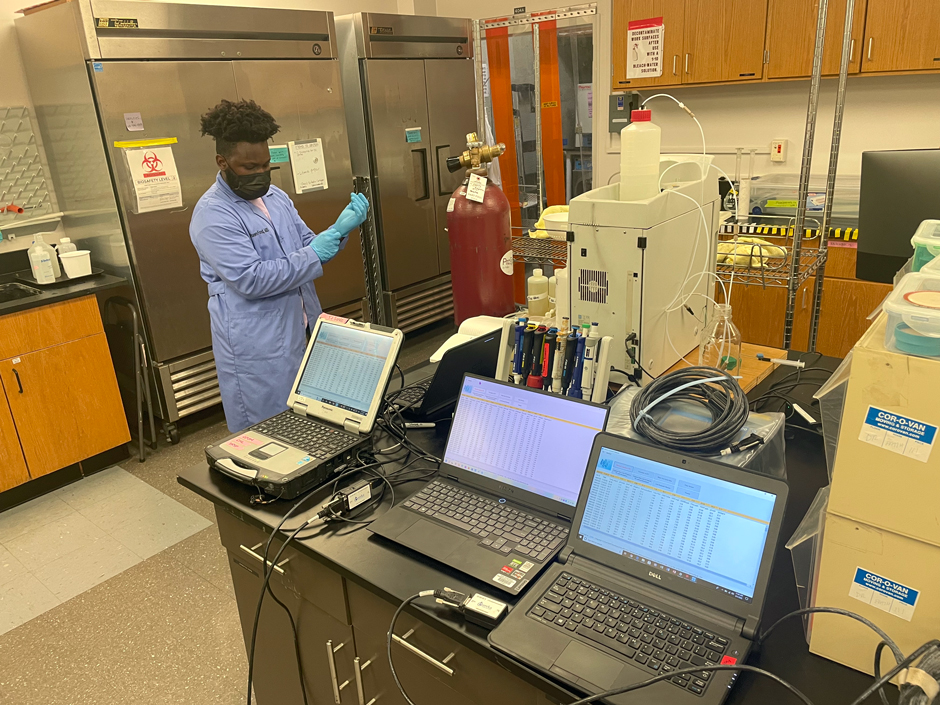
Keyshawn Ford, Masters student in Environmental Engineering, getting ready to do a lab experiment with Manta TRP and CDOM sensors. (Credit: Natalie Mladenov)
Monitoring Recovery in the Tijuana Estuary
More recently, FOX 5/KUSI reported that wastewater contaminants traveling over the border have decreased due to the city using a third pump to divert the sewage into the City of Tijuana’s own wastewater infrastructure.
The long-term deployment of the floating platform highlights how contaminant levels have changed since the city started diverting wastewater, recording water quality conditions during frequent flow years and how the river has started to recover.
Mladenov explains, “I think this is the power of these sensors. They are able to differentiate between this really poor water quality that was happening on a daily basis, and now that the cross-border flows have decreased.”
She continues, “Water quality parameters recorded in the tryptophan-like and CDOM-like fluorescence—those intensity readings are certainly lower now, reflecting improved water quality.”
“It’s been rewarding to work with the community to monitor a serious problem, and it’s also been gratifying to see the problem get resolved in some ways. So, we’re in the happy position where we can help monitor improvements and evaluate success,” adds Biggs.
While infrastructure improvements have helped decrease flows, Mladenov and Biggs have still reported nighttime flows over the border, which have continued to impact water quality. Still, consistent monitoring of the river has allowed Biggs and Mladenov to see the changes in water quality in real-time as well as shedding light on lesser-known conditions in the estuary.
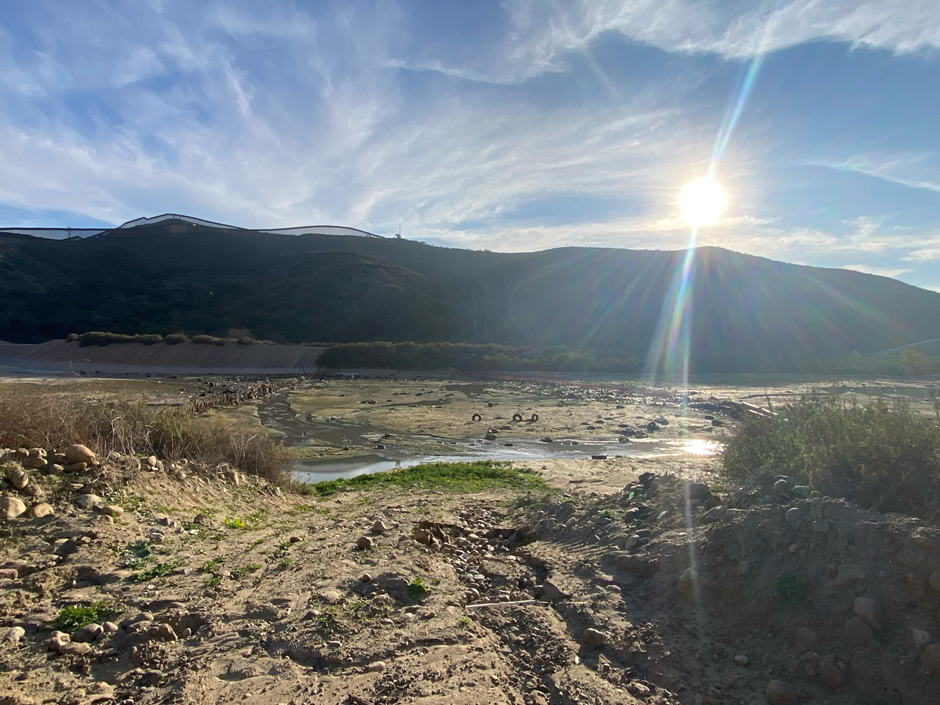
View of the Tijuana River at the US-Mexico border. (Credit: Alexandra Grant)
Utilizing Real-Time Data to Better Understand the Tijuana River
Mladenov highlights the tidal conditions they’ve been able to observe during the multi-year project. More specifically, neap tide and spring tides in sewage polluted waters can have vastly different impacts on the estuary.
Spring tides that carry sewage contaminants are more likely to mix and dilute the contaminants. In contrast, neap tide does not cause the same mixing—instead, it concentrates the sewage toward the surface of the water, impacting recreation and the ecosystem.
Due to the sensors being placed at multiple depths in the water column, the long-term data shows when and where pollutants are most concentrated.
“In neap tide conditions, you essentially have your worst water quality. You have a polluted layer of fresh water floating on top of less polluted, cleaner sea water beneath it,” highlights Mladenov.
She continues, “The sensors allowed us to see that—and I think with just grab sampling alone, that would be hard, to pinpoint.”
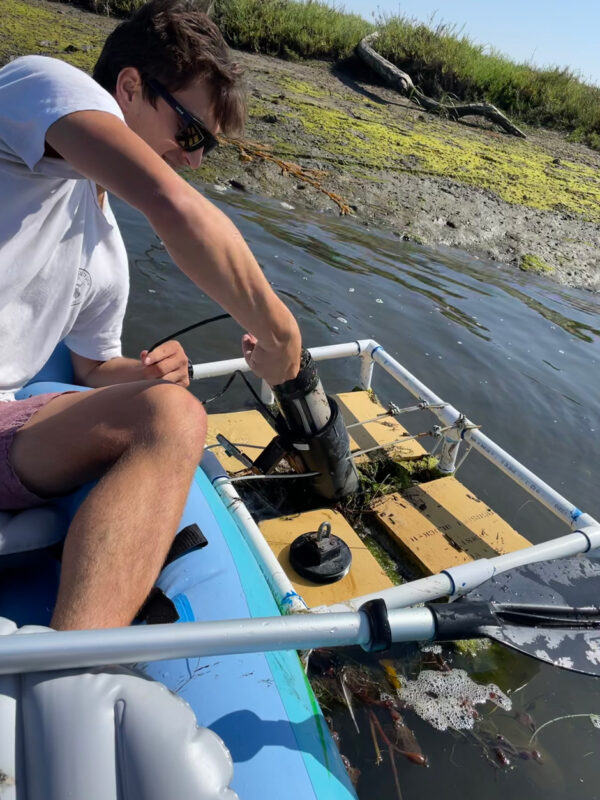
Installing the Manta sonde into the buoy housing in the Tijuana Estuary. (Credit: Sean Quezada / San Diego State University)
Conclusion
While there are limitations to the sensors when exposed to high concentrations of wastewater over time, Mladenov and Biggs are confident in the system’s ability to record the presence of sewage. As the Tijuana River recovers, the sensors will report data more accurately and that recovery can be documented.
For now, water quality monitoring in the river will continue thanks to the continued support of organizations like the JW Sefton Foundation, US EPA, and NASA. Volunteers from the Tijuana River National Estuarine Research Reserve, the Southwest Wetlands Interpretive Association, and other organizations on both sides of the US-Mexico border have made this project possible.
Biggs explains, “We want to understand how the system is recovering, and we also want to continue monitoring to confirm that the recent reduction in wastewater flows continues. So, there’s still a need for monitoring, because—especially during storm events—we anticipate that the system will be overwhelmed again, and we still really need to understand those multi-day high sewage release events and their impact on the estuary and coastal water quality.”
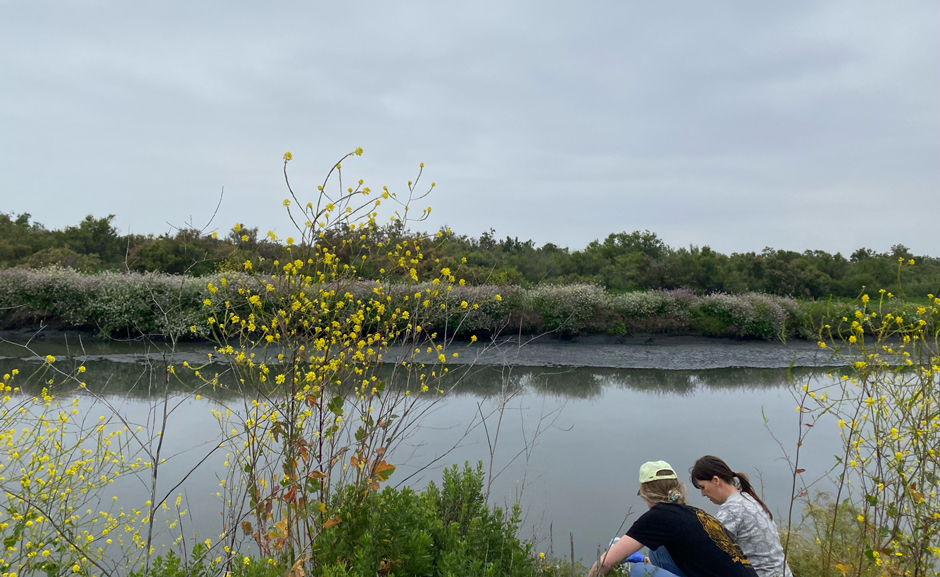
Masters student in Environmental Engineering, Alexandra Grant, (pictured at left) and Professor Natalie Mladenov (pictured at right) sampling to evaluate water quality in the Tijuana River Estuary. (Credit: Alina Alex)




0 comments